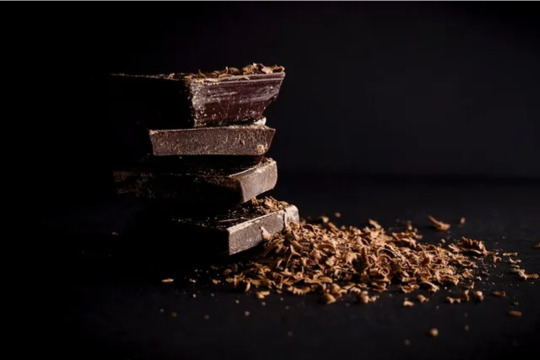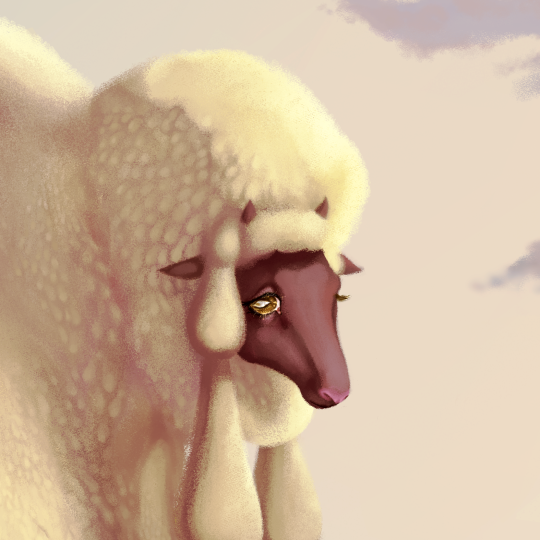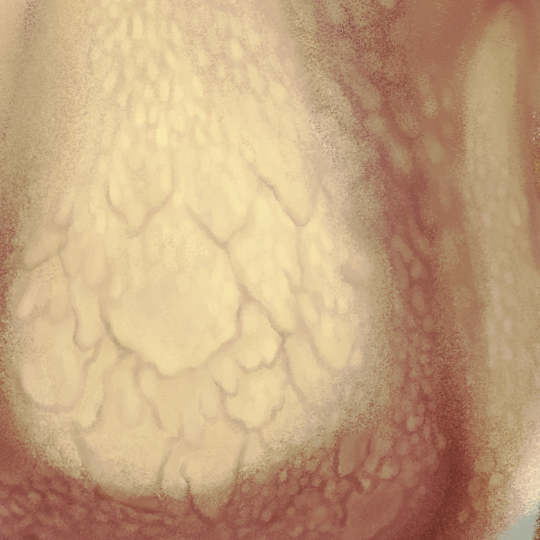#LiveStock
Text

Things That Like Carrots are lurking in the waters and are for sale for only 15$ on Facebook marketplace.
#shiftythrifting#thrifting#submission#shiftylisting#fresh from the bog#???????#oh it's about rabbits#livestock
12K notes
·
View notes
Text
12K notes
·
View notes
Text
I will write this thought about Veganism and Classism in the USA in another post so as to not derail the other thread:
There are comments in the notes that say meat is only cheaper than plant based foods because of subsidies artificially lowering the price of meat in the United States. This is...part of the story but not all of it.
For my animal agriculture lab we went to a butcher shop and watched the butcher cut up a pig into various cuts of meat. I have had to study quite a bit about the meat industry in that class. This has been the first time I fully realized how strongly the meat on a single animal is divided up by socioeconomic class.
Like yes, meat cumulatively takes more natural resources to create and thus should be more expensive, but once that animal is cut apart, it is divided up between rich and poor based on how good to eat the parts are. I was really shocked at watching this process and seeing just how clean and crisp an indicator of class this is.
Specifically, the types of meat I'm most familiar with are traditionally "waste" parts left over once the desirable parts are gone. For example, beef brisket is the dangly, floppy bit on the front of a cow's neck. Pork spareribs are the part of the ribcage that's barely got anything on it.
And that stuff is a tier above the "meat" that is most of what poor people eat: sausage, hot dogs, bologna, other heavily processed meat products that are essentially made up of all the scraps from the carcass that can't go into the "cuts" of meat. Where my mom comes from in North Carolina, you can buy "livermush" which is a processed meat product made up of a mixture of liver and a bunch of random body parts ground up and congealed together. There's also "head cheese" (made of parts of the pig's head) and pickled pigs' feet and chitlin's (that's made of intestines iirc) and cracklin's (basically crispy fried pig skin) and probably a bunch of stuff i'm forgetting. A lot of traditional Southern cooking uses basically scraps of animal ingredients to stretch across multiple meals, like putting pork fat in beans or saving bacon grease for gravy or the like.
So another dysfunctional thing about our food system, is that instead of people of each socioeconomic class eating a certain number of animals, every individual animal is basically divided up along class lines, with the poorest people eating the scraps no one else will eat (oftentimes heavily processed in a way that makes it incredibly unhealthy).
Even the 70% lean ground beef is made by injecting extra leftover fat back into the ground-up meat because the extra fat is undesirable on the "better" cuts. (Gross!)
I've made, or eaten, many a recipe where the only thing that makes it non-vegan is the chicken broth. Chicken broth, just leftover chicken bones and cartilage rendered and boiled down in water? How much is that "driving demand" for meat, when it's basically a byproduct?
That class really made me twist my brain around about the idea of abstaining from animal products as a way to deprive the industry of profits. Nobody eats "X number of cows, pigs, chickens in a lifetime" because depending on the socioeconomic class, they're eating different parts of the animal, splitting it with someone richer or poorer than they are. If a bunch of people who only ate processed meats anyway abstained, that wouldn't equal "saving" X number of animals, it would just mean the scraps and byproducts from a bunch of people's steaks or pork chops would have something different happen to them.
The other major relevant conclusion I got from that class, was that animal agriculture is so dominant because of monoculture. People think it's animal agriculture vs. plant agriculture (or plants used for human consumption vs. using them to feed livestock), but from capitalism's point of view, feeding animals corn is just another way to use corn to generate profits.
People think we could feed the world by using the grain fed to animals to feed humans, but...the grain fed to animals, is not actually a viable diet for the human population, because it's literally just corn and soybean. Like animal agriculture is used to give some semblance of variety to the consumer's diet in a system that is almost totally dominated by like 3 monocrops.
Do y'all have any idea how much of the American diet is just corn?!?! Corn starch, corn syrup, corn this, corn that, processed into the appearance of variety. And chickens and pigs are just another way to process corn. That's basically why we have them, because they can eat our corn. It's a total disaster.
And it's even worse because almost all the USA's plant foods that aren't the giant industrial monocrops maintained by pesticides and machines, are harvested and cared for by undocumented migrant workers that get abused and mistreated and can't say anything because their boss will tattle on them to ICE.
8K notes
·
View notes
Text
#WatercolorWednesday:

Portrait of a Ladakhi Mountain Goat [Changthangi*]
India, Mughal dynasty, c.1601-25
Opaque watercolor, ink, gold on paper
37.9 × 25.6 cm (14 7/8 × 10 1/8 in.)
The Art Institute of Chicago 1919.944: https://www.artic.edu/artworks/76868/portrait-of-a-ladakhi-mountain-goat
🆔 “The Changthangi [aka Changpa, Ladakh Pashmina, Kashmiri] is a breed of cashmere goat native to the high plateaus of Ladakh in northern India. It is closely associated with the nomadic Changpa people of the Changthang plateau….The intense cold of the region causes the goats to grow a thick undercoat, which is harvested to produce the fine pashmina grade of cashmere.”
https://en.wikipedia.org/wiki/Changtha
#IndianArt #SouthAsianArt
#animals in art#painting#Indian art#South Asian art#Asian art#Mughal art#miniature#natural history art#goat#Changthangi#livestock#domesticated animals#watercolor#Watercolor Wednesday#Art Institute of Chicago
635 notes
·
View notes
Text
"Marginal improvements to agricultural soils around the world would store enough carbon to keep the world within 1.5C of global heating, new research suggests.
Farming techniques that improve long-term fertility and yields can also help to store more carbon in soils but are often ignored in favor of intensive techniques using large amounts of artificial fertilizer, much of it wasted, that can increase greenhouse gas emissions.
Using better farming techniques to store 1 percent more carbon in about half of the world’s agricultural soils would be enough to absorb about 31 gigatons of carbon dioxide a year, according to new data. That amount is not far off the 32 gigaton gap between current planned emissions reduction globally per year and the amount of carbon that must be cut by 2030 to stay within 1.5C.
The estimates were carried out by Jacqueline McGlade, the former chief scientist at the UN environment program and former executive director of the European Environment Agency. She found that storing more carbon in the top 30 centimeters of agricultural soils would be feasible in many regions where soils are currently degraded.
McGlade now leads a commercial organization that sells soil data to farmers. Downforce Technologies uses publicly available global data, satellite images, and lidar to assess in detail how much carbon is stored in soils, which can now be done down to the level of individual fields.
“Outside the farming sector, people do not understand how important soils are to the climate,” said McGlade. “Changing farming could make soils carbon negative, making them absorb carbon, and reducing the cost of farming.”
She said farmers could face a short-term cost while they changed their methods, away from the overuse of artificial fertilizer, but after a transition period of two to three years their yields would improve and their soils would be much healthier...
Arable farmers could sequester more carbon within their soils by changing their crop rotation, planting cover crops such as clover, or using direct drilling, which allows crops to be planted without the need for ploughing. Livestock farmers could improve their soils by growing more native grasses.
Hedgerows also help to sequester carbon in the soil, because they have large underground networks of mycorrhizal fungi and microbes that can extend meters into the field. Farmers have spent decades removing hedgerows to make intensive farming easier, but restoring them, and maintaining existing hedgerows, would improve biodiversity, reduce the erosion of topsoil, and help to stop harmful agricultural runoff, which is a key polluter of rivers."
-via The Grist, July 8, 2023
#agriculture#sustainable agriculture#sustainability#carbon emissions#carbon sequestration#livestock#farming#regenerative farming#native plants#ecosystems#global warming#climate change#good news#hope
4K notes
·
View notes
Text

✅️ featherless
❎️ four legged, and unguligrade at that
Wikipedia Dairy Cattle image is Not A Man!
#not a man#Cow#animal#farm animals#Cattle#Bovine#Dairy cow#Dairy cattle#Livestock#farming#farms#holstein friesian#Holstein#Wikipedia
602 notes
·
View notes
Text



Goat Appreciation Post
#mixed media#goat#goats#horns#animal art#animals#milk#livestock#acrylic#traditional art#art#painting#primitive wiggles#anthropomorphic
446 notes
·
View notes
Text

Day-old baby yak. Her name is Tremain.

Her mama is so proud!!
446 notes
·
View notes
Text
Good News - May 22-28
Like these weekly compilations? Support me on Ko-fi or $Kaybarr1735! Also, if you tip me on Ko-fi or CashApp (and give me some way to contact you if it doesn’t automatically), at the end of the month I'll send you a link to all of the articles I found but didn't use each week - almost double the content!
1. Scientists Invent Healthier More Sustainable Chocolate

“The new chocolate recipe from researchers at ETH Zurich uses more materials from the cocoa pod that are usually discarded, including more of the pulp as well as the inner lining of the husk, known as the endocarp. […] The resulting chocolate also [was “deliciously sweet” and] had 20% more fibre and 30 percent less saturated fat than average European dark chocolate[, and] it could enable cocoa farmers [to] earn more from their crops.”
2. Vermont Is Coming for Big Oil, Making It Pay for Decades of Climate Pollution

“Legislators in Montpelier are on the brink of enacting the "Climate Superfund Act," modeled after the federal Superfund law, that seeks to make oil, gas and coal companies pay for damages linked to historical greenhouse gas emissions. […] Companies would be held liable for the costs associated with […] floods and heat waves, along with losses to biodiversity, safety, economic development and anything else the treasurer deems reasonable[, that were caused by their emissions].”
3. Important bird habitat now protected in the Rocky Mountain Trench
“Grassland-reliant species in the Rocky Mountain Trench now have more protected habitat thanks to a new [270-hectare] conservation area near Cranbrook. […] About one-third of the Skookumchuck Prairie Conservation Area is forested[…,] Most of the site is a dry grassland[…, and] Three hectares of wetlands add to the landscape diversity and offer crucial benefits to wildlife and water systems in the area. This conservation gem also provides habitat for endangered American badger and excellent winter range for elk, mule deer and white-tailed deer.”
4. Lemur Week marked by 70th breeding success

“A wildlife park has celebrated its 70th lemur breeding success ahead of a week raising money to help save the endangered primates. […] The park's open-air Madagascar exhibit is home to 31 free-roaming lemurs and was officially opened in 2008. […] Females are only sexually receptive for just one or two days a year, leaving a small window of opportunity for males to father offspring. […] The two playful siblings, one female and one male, were born to father Bernard and mother Hira.”
5. Innovative material for sustainable building
“Researchers introduce a polymer-based material with unique properties. This material allows sunlight to enter, maintains a more comfortable indoor climate without additional energy, and cleans itself like a lotus leaf. The new development could replace glass components in walls and roofs in the future.”
6. Isle of Wight eagles don't pose threat to lambs as feared

“While there had previously been fears that the eagles would feed on livestock, such as lambs, the project has found no evidence of this. [… “W]hite-tailed eagles effectively steal meals from other predatory birds[, which is] a really important ecological role that had been lost within the landscape and is being restored.” [… The birds’] population was boosted by a chick last year – the first time the species has bred in England in 240 years.”
7. Breakthrough discovery uses engineered surfaces to shed heat
“Cheng's team has found a way to lower the starting point of the [Leidenfrost] effect by producing a surface covered with micropillars. […] The discovery has great potential in heat transfer applications such as the cooling of industrial machines and surface fouling cleaning for heat exchangers. It also could help prevent damage and even disaster to nuclear machinery.”
8. New malaria vaccine delivered for the first time

“A total of 43,000 doses arrived by air today from UNICEF, and another 120,000 are scheduled to show up in the coming days. […] They're the first vaccines designed to work against a human parasite. […] Across four African countries, these trials showed a 75% reduction in malaria cases in the year following vaccination of young children. […] The Serum Institute of India, who will be manufacturing the new vaccine, says a hundred million doses will likely be available to countries by the middle of next year.”
9. Urban gardening may improve human health: Microbial exposure boosts immune system
“"One month of urban indoor gardening boosted the diversity of bacteria on the skin of the subjects and was associated with higher levels of anti-inflammatory cytokines in the blood. The group studied used a growing medium with high microbial diversity emulating the forest soil," [… whereas] the control group used a microbially poor peat-based medium. [… N]o changes in the blood or the skin microbiota were seen. […] “This is the first time we can demonstrate that meaningful and natural human activity can increase the diversity of the microbiota of healthy adults and, at the same time, contribute to the regulation of the immune system."”
10. Cities Are Switching to Electric Vehicles Faster Than Individuals

“[M]ost large cities have adopted some kind of climate goal, and some of them are buying EVs for their municipal fleets at a faster rate than the general public. And that progress could speed up as more EVs enter the market and as cities get educated about grant funding and tax incentives that were passed over the last four years.”
May 15-21 news here | (all credit for images and written material can be found at the source linked; I don’t claim credit for anything but curating.)
#hopepunk#good news#chocolate#sustainability#farming#health#vermont#big oil#oil companies#climate change#cooling#technology#nuclear#malaria#vaccine#africa#unicef#eagles#livestock#england#birds#electric vehicles#glass#energy efficiency#habitat#conservation#lemur#zoo#gardening#urban gardening
328 notes
·
View notes
Text

Nothelm
(I have a cow and I need everyone to know how important he is)
359 notes
·
View notes
Text
My calf scramble post got more interactions than I thought It would, but It just reminded me of him.
Now I am a fourth generational farmer, I've seen dozens of steers come and go. But Rugz, he was different. I fought tooth and nail for him, and took him from feral and afraid to the sweetest bundle of beef.
I sold him August 2023, and to this day I still think about it. I remember breaking down in the sale ring and crying Infront of dozens of people. I remember being handed the empty halter as he was trailered. I remember when I composed myself and walked back in, but broke down because the barn was empty.
I'm a strong guy, I pride myself in it. But there's still some grief knawing inside of me. I'm mad about it, I've always said and say it's the industry. It's what you do. I can't comprehend why I am upset over him still, I find it embarrassing to talk about. I personally raised another steer again this year and I was sad over him but nothing like this.
But there was something about Rugz, that stupid blonde calf. The only calf I had that ever made me consider backing away from my passions and dreams. If I would've kept him I would have been set back so many years, but if you ask me now. I would be fine waiting if it meant he was there.
I love farming, I am a hog farmer and cattle farmer and years from now I'll grow my operations. I'll have hundreds of livestock pass through my hands, and I'll still think of him.
The steer that built me.




#Cow#Cows#Cute cows#Farm#Farming#Farmer#Farmblr#Homestead#Homesteading#Show cow#Fluffy cow#Fluffy cows#Animal#Livestock#Rodeo
286 notes
·
View notes
Text



🐑 Wooloo Appears! 🐑
I finally got around to my 19th Century Livestock Pokemon Portraits! I started these a year ago with my Miltank 🐄 portrait, and I'm so glad I've finished this second piece. I think it turned out real nice. Gonna do and Emboar 🐖 and a Tauros 🐂 also!
Sorry for the lack of activity this year, but I'm feeling more creative now so there will be things to look forward to from me I think :)
I will put this up on my society6 so if anyone wants this on their wall or on a mug or something you'll be able to!
Here's my Miltank also~

608 notes
·
View notes
Text
500 notes
·
View notes
Text
What I find really interesting about Dungeon Meshi is how it explores the role of humans/humanoids in an ecosystem and what is okay to consume.

Take the kelpie for example. Senshi is attached to the kelpie that frequently joins him while he's fishing, even naming her. Marcille also thinks it's cute and supports the idea of Senshi riding it. After that doesn't turn out well Senshi apologises while delivering the killing blow, appearing remorseful. Nevertheless, he himself sets out to salvage usable ingredients from the now deceased kelpie and even Marcille uses some of its fat for soap.
That is an example of exactly the type of relationship I think humans should have with livestock animals. I'm mostly vegan (occasional exceptions made for fish and eggs) both because of the environmental and animal rights issues with large scale livestock farming/the meat industry. However, I very much support a harmonious approach shown by indigenous peoples and small scale farming for example. Where, similar to Senshi and the kelpie, the animal lives a good life and is loved by its keepers until it is killed and all its parts are utilised.
There is also something to be said about people's involvement in the slaughter of animals so they respect the origin of their favourite products, like Marcille with the soap, since that is likely one of the reasons people currently consume animal products in such copious amounts. I regrettably didn't save the post in my drafts, but I saw someone on here talk about how far removed we are in the west from the origin of our meat products and how absurd it is that people are disgusted by a fish served with its head for example.
Meanwhile, Laios and Chilchuck are arguing over whether it's okay to eat a fish-man since it resembles a humanoid. Laios naturally wants to eat everything but Chilchuck has reservations when it comes to humanoids. This comes up in later episodes as well, where the rest of the crew appears to have fewer reservations since the creatures are being killed in self-defense and they're now seeing the utility of not letting resources go to waste.

Now I wonder if they'll take it as far as cannibalism, but humanoids are already a close metaphor. In any case, it is a great way to showcase how the arbitrary values we attribute to different species influences what we consider to be acceptable food, even though it's all just meat. I mean, I could never slaughter a cat for example but somehow would be fine with eating human flesh...
#honerable mention for Senshi's comments to never exhaust a food source#episode 7#dungeon meshi#delicious in dungeon#Senshi#Marcille#Laios#Chilchuck#utility#veganism#vegetarianism#livestock#meat industry#cannibalism#long post#ecosystem#queue#kelsonius op
193 notes
·
View notes
Photo

~ On the Farm ~
#farm life#sheep#summer#summertime#shepherding#meadow#trees#nature photography#livestock#farms#animals
104 notes
·
View notes
